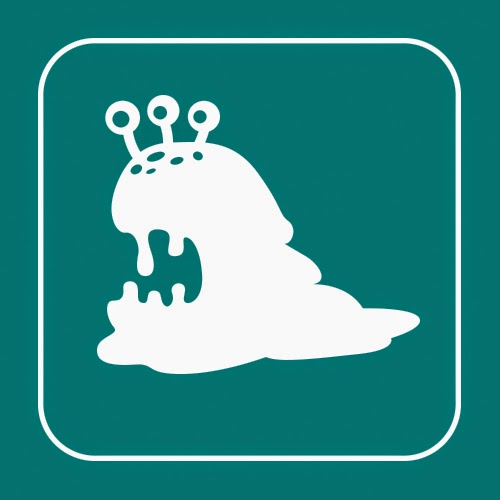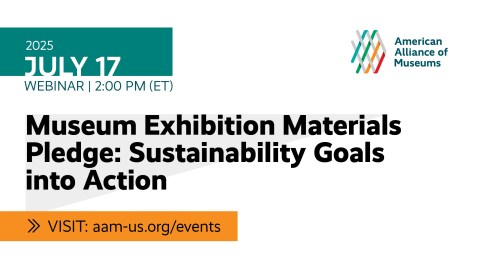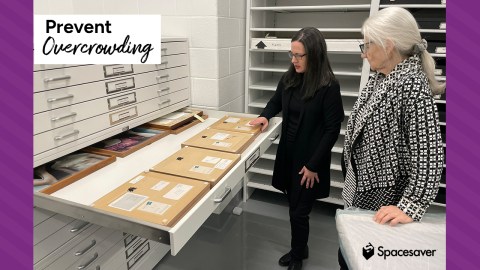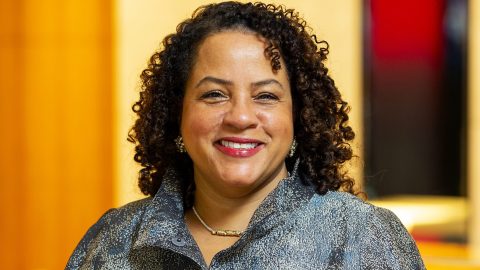There’s been plenty of buzz, this past week, as AAM launches its metamorphosis into the American Alliance of Museums. In this guest post, president Ford W. Bell shares his vision for the future and how the changes at AAM will help museums control their destiny.
- Essential education institutions
- Vital economic engines
- Valued community partners
- Catalysts that help shape a better world
So I’m excited to talk to you about the changes that being implemented at AAM to help make this vision a reality. We are rolling out a new membership structure to support our goal of uniting all U.S. museums in an alliance that will amplify our influence and give us the collective clout to be a powerful driver of change.
We’ve listened to you over the past years—through surveys, at sessions at our conferences and those of other associations, and one-on-one as I’ve travelled the country visiting your institutions and hearing about what you need from us. Based on what we’ve heard, we’re realigning our activities to support two directives: championing the cause of museums, and nurturing excellence. In order to do this, we are making membership in AAM and participation in our excellence programs more accessible and affordable.
As Elizabeth illustrated on this blog on Tuesday, we recognize the diversity of the museum field, and we value your individual strengths. However, it is vital that museums also identify what they have in common. As a united field we can speak with one clear voice to important constituencies, including elected officials, funders and the general public, to tell our story effectively. AAM’s Center for the Future of Museums is documenting the many forces—financial, political, cultural and economic—that challenge the work of museums. As an Alliance we can unify not only those who work in museums and with museums, but also those who love our museums and can be the best advocates on our behalf. As an Alliance we have the strength to meet the challenges of the future.
Museums are under increasing pressure to measure and report on the benefits they provide to society. Notably, we need to demonstrate we are excellent stewards for the collections in our care and of the funds that sustain our work. To create multiple ways for museums to be recognized for their good stewardship, AAM is introducing a Continuum of Excellence that provides a range of options that enable museums of all types and sizes to demonstrate their achievements. We encourage all museums to take a to demonstrate they are committed to operating in accord with national standards and best practices. Some museums may choose to use our new Core Documents Verification program to confirm that the policies and procedures they have in place reflect standard practices of professional museums. We hope many museums continue to use our Museum Assessment Program to improve their operations and document their achievements. And, we have streamlined Accreditation so that becoming fully accredited will take about half as long and cost half as much as it used to. In addition, the Continuum integrates with other standards recognition programs such as the American Association for State and Local History’s StEPs program and the Association of Zoos and Aquarium’s Accreditation, recognizing the ways that museums have already demonstrated their commitment to excellence through these programs.
Technology and financial pressures are combining to change the ways in which organizations associate with each other, learn what they need to know and hire and retain the staff they need. To adapt to these realities, we’ve deconstructed and reinvented our membership model. In order to be a powerful advocate for our field, AAM wants to represent every museum and every museum professional. We’ve asked you what it would take to reach that ambitious goal, and here is what you have told us: we have to improve the value of what we offer with programs that are more affordable, accessible and relevant. Our new approach to museum membership is designed to remove all barriers to joining the Alliance. Our new Tier 1 membership asks museums to “pay what you can.” I’m serious about that—if I’m visiting a little, all-volunteer museum in a small town and the chair of their board hands me $10 and their contact information, I’ll sign them up. Even the biggest museums opting for Tier 3 membership will pay only one-third the dues the largest members of AAM paid under the old system. And at tier 3, museums can opt for an “all-staff” add-on package that enables all employees to become individual members of AAM at no additional charge. I expect the reduced costs, added flexibility and clear value to dramatically increase the Alliance’s membership—and a larger membership enables us to speak with a louder voice, and wield more influence, when we advocate on your behalf.
Through CFM, we have been preaching for four years that museums have to recognize how the world is changing, and adapt their own operations in order to thrive. This week, I am proud to introduce changes that demonstrate that the Alliance is applying this lesson to its own operations. These are the first steps toward becoming a more nimble, responsive and forward-looking organization that will help lead museums into a bright future.









Here is one museum's thoughts on the "buzz."
http://peabodyslament.wordpress.com/2012/09/11/the-aam-is-now-the-aam/
T.H. Gray, Director-Curator
American Hysterical Society
And I always thought that Alliance and Association were pretty good as synonyms. It's not clear to me what an Alliance can achieve that an Association couldn't. Is there anything in the new program that couldn't have been delivered under the previous name?